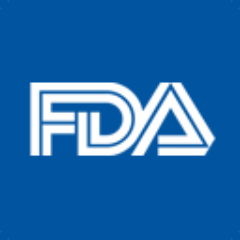If there is one thing that has been keeping the premium cigar industry up at night, it is substantial equivalence. This past week the U.S. Food and Drug Administration (FDA) issued a draft guidance on proposed rule-making around the SE process. As part of the rulemaking process, the draft guidance will be open to public comment before the rules become final.
Substantial Equivalence marks a pathway where many cigar companies can keep product on the market introduced after February 15th, 2017 without going through a more costly pre-market approval process. It involves demonstrating a product is substantially equivalent to a product commercially marketed before February 15th, 2017. Products commercially marketed before that date are exempt from FDA regulation.
The FDA defines substantial equivalence two ways:
- “has the same characteristics as the predicate tobacco product” or
- “has different characteristics and the information submitted contains information, including clinical data if deemed necessary by FDA that demonstrates that it is not appropriate to require premarket review under section 910(a), (b) and (c) of the FD&C Act because the product does not raise different questions of public health.”
Many of the “hows” in terms of how this will be accomplished are still in question. The cigar industry has argued that a one-size-fits-all process to demonstrate substantial equivalence doesn’t work with premium cigars because it is an all-natural process.
The guidance does attempt to spell out what is required for an SE application. This includes required information such as product information, predicate product, date of submission, comparative information, and comparative testing. The testing process very much remains a black hole. While it is less expensive than the Pre-Market Approval process, it still will come at a considerable cost to the cigar industry.
While premium cigars weren’t explicitly called out, outgoing FDA Commissioner Dr. Scott Gottlieb stated the agency has not been happy with the quality of the SE submissions. “Given the important factors the agency must consider in reviewing these products, it’s critical that manufacturers provide high-quality submissions to allow the FDA to make a determination. Over the past few years, the quality of SE Reports sent to the FDA has improved, but the reports submitted to the agency still range widely in the level of detail included. For example, some have very little information on the comparison of the new tobacco product with a predicate tobacco product while other SE Reports are much more detailed in describing how the new tobacco product compares to the identified predicate tobacco product and provide supporting information.”
One other development that is worth watching is the notion of commercially available product versus test-marketed product. In the guidance, the FDA states:
[themify_box ]
FDA also considers a tobacco product marketed exclusively in test markets on February 15, 2007, to be a new tobacco product that is subject to premarket review by FDA. In addition, such test marketed products cannot serve as valid predicate products in an SE Report. A tobacco product that the applicant intends to test market after February 15, 2007, is also a new tobacco product subject to premarket review under section 910(a) of the FD&C Act because it was not commercially marketed in the United States as of February 15, 2007.
Because the terms “test marketing” and “commercially marketed” are not interchangeable, FDA is considering whether it would be useful to applicants for the rule to further expand on or define the terms “test marketing” and “commercially marketed.” Specifically, FDA is considering whether to add the following definition of test marketing: “test marketing” means distributing or offering for sale (which may be shown by advertisements, etc.) a tobacco product in the United States for the purpose of determining consumer response or other consumer reaction to the tobacco product, with or without the user knowing it is a test product, in which any of the following criteria apply:
- Offered in a limited number of regions;
- Offered for a limited time; or
- Offered to a chosen set of the population or specific demographic group. FDA is considering whether to define “commercially marketed” as offering a tobacco product for sale to consumers in all or in parts of the United States. Factors FDA may consider include advertising or other means used to communicate that the tobacco product was available for purchase, including dated advertisements, dated catalog pages, dated promotional material, dated trade publications, dated bills of lading, dated freight bills, dated waybills, dated invoices, dated purchase orders, dated manufacturing documents, inventory lists, or any other document that demonstrates that the product was commercially marketed (other than exclusively in test markets) in the United States as of February 15, 2007. FDA invites comment on what evidence would be sufficient to demonstrate that a product was commercially marketed (other than in test markets) as of February 15, 2007.
[/themify_box]
While the notion of test marketed versus commercially marketed product is not new, it does raise a question on what the FDA will consider to be a test-marketed product and how it will enforce regulations. In particular, if a company applies for SE against a limited edition, limited shop-exclusive or regional release, will the predicate product be considered commercially available or a test-marketed product?
The full text of the draft guidance can be found here. The guidance will publish to the Federal Register on April 2nd, and the public comment period will last 75 days.





